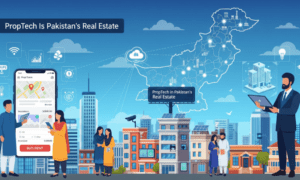In today’s work environment, the definition of productivity has evolved far beyond traditional measures of output and efficiency. The modern professional relies on seamless communication, uninterrupted collaboration, and the ability to access and share information instantly.
Connectivity, once seen as a technical advantage, has now become the central pillar that fuels productivity. It bridges the gap between people, devices, and ideas, creating an ecosystem where work flows effortlessly and innovation thrives. Whether working from home, the office, or a hybrid setup, strong connectivity determines how effectively we perform, collaborate, and achieve goals.
The Power of Connected Workspaces
The modern workspace is no longer confined to a single desk or physical office. It extends across devices, platforms, and locations. The rise of remote and hybrid work has made connectivity the heart of operational efficiency. When every device communicates seamlessly, productivity naturally follows. A well-connected workspace enables employees to switch between laptops, tablets, and smartphones without losing progress or focus.
For instance, a docking station that connects multiple devices helps create a unified workstation, allowing professionals to transition effortlessly between tasks. This fluidity not only enhances performance but also eliminates time lost to technical disruptions.
When connectivity is integrated into the very structure of a workspace, it empowers individuals to work smarter. Meetings begin on time, collaboration tools sync instantly, and workflows continue without interruption. This environment encourages deep focus and creativity while reducing the friction that often accompanies digital work.
Collaboration Without Boundaries
The true power of connectivity lies in its ability to dissolve barriers. It enables real-time collaboration between teams, no matter where they are located. Instead of relying on scheduled meetings or delayed email exchanges, employees can share ideas instantly through connected platforms. This immediacy fosters teamwork, encourages innovation, and ensures that decision-making happens swiftly and effectively.
Connected tools also allow for transparency in projects. Shared workspaces, cloud platforms, and communication tools create a collective environment where everyone remains on the same page. When team members can access files, communicate updates, and track progress in one place, productivity no longer depends on proximity. This kind of digital synergy not only improves outcomes but also strengthens relationships within teams, as communication becomes smoother and more consistent.
The Role of Technology in Streamlined Workflows
Connectivity and technology go hand in hand. Modern productivity tools are designed to integrate seamlessly with one another, creating a unified system that simplifies even the most complex workflows. Automation, cloud-based software, and synchronized data systems ensure that repetitive tasks are handled efficiently, freeing professionals to focus on more strategic work.
For example, shared calendars, project management tools, and communication platforms can now work together without the need for constant manual updates. This kind of synchronization ensures that everyone has access to the same information, minimizing errors and redundancies. When all digital systems operate cohesively, employees can devote their time to meaningful work rather than navigating technical barriers.
Empowering the Hybrid Workforce
Hybrid work has become a defining feature of the modern professional landscape. Employees expect the freedom to choose where and how they work, while employers seek to maintain efficiency and collaboration. Connectivity bridges these two needs by ensuring that no matter where employees are located, they remain part of the same network.
Video conferencing, cloud storage, and real-time messaging have transformed how teams interact. The physical distance between colleagues no longer limits communication or collaboration. With strong connectivity, a hybrid workforce can function as a single unit, maintaining productivity levels equal to or even higher than those in traditional office settings. This flexibility boosts morale, promotes work-life balance, and enhances overall engagement.
Enhancing Creativity Through Seamless Communication
Creativity thrives in environments where ideas can flow freely. Connectivity ensures that these ideas are shared, refined, and developed in real time. When communication is instant and effortless, brainstorming sessions, feedback loops, and project discussions become more dynamic and productive. This interconnectedness inspires individuals to contribute more actively, knowing that their input can be heard and acted upon immediately.
Moreover, connected systems promote inclusivity. Every voice within an organization can participate, regardless of time zone or position. By removing the limitations of traditional communication methods, connectivity allows organizations to build a more collaborative culture where creativity and innovation are encouraged at all levels.
Data Accessibility and Informed Decision-Making
In a connected environment, data becomes a powerful ally. Easy access to information enables quicker decision-making and more accurate analysis. When all systems and platforms are connected, employees can retrieve the information they need without delays or miscommunication. This not only saves time but also ensures that every decision is based on the most current and relevant data.
Connectivity transforms raw data into actionable insights. With integrated systems, organizations can track progress, monitor performance, and identify opportunities for improvement in real time.
The Human Element of Connectivity
While technology is the foundation of connectivity, the true value lies in its human impact. Connectivity strengthens relationships, fosters understanding, and builds trust. It enables people to stay in touch, collaborate meaningfully, and support one another, regardless of physical distance. When communication flows smoothly, teams feel more connected emotionally as well as digitally.
Leaders who prioritize connectivity cultivate stronger organizational cultures. They encourage open communication, empower employees with the right tools, and promote a sense of unity. As a result, individuals feel more engaged, valued, and motivated to contribute their best work.
Building the Future of Work
The future of productivity will be defined not by how many tasks can be completed, but by how efficiently and collaboratively they can be achieved. Connectivity is at the heart of this transformation. It empowers organizations to be more agile, employees to be more engaged, and teams to be more innovative. As businesses continue to embrace digital transformation, the importance of staying connected will only grow.
In essence, connectivity is no longer just about technology—it is about creating an environment where people, processes, and ideas work together in perfect harmony. It eliminates the barriers that once slowed progress and replaces them with seamless interactions and unified goals. The modern professional thrives in a connected world because it amplifies what truly matters: collaboration, creativity, and clarity.



































